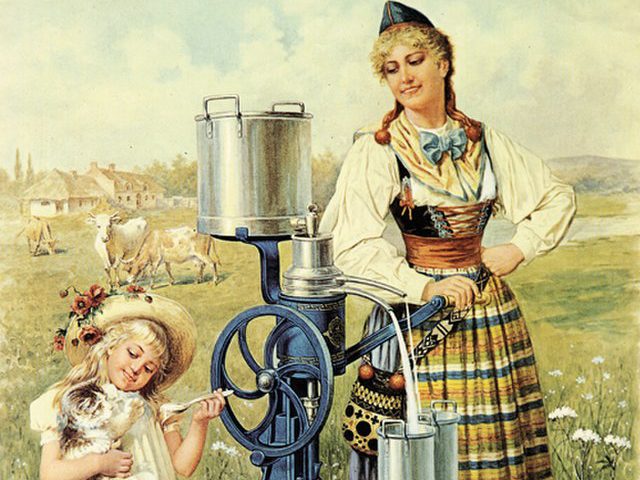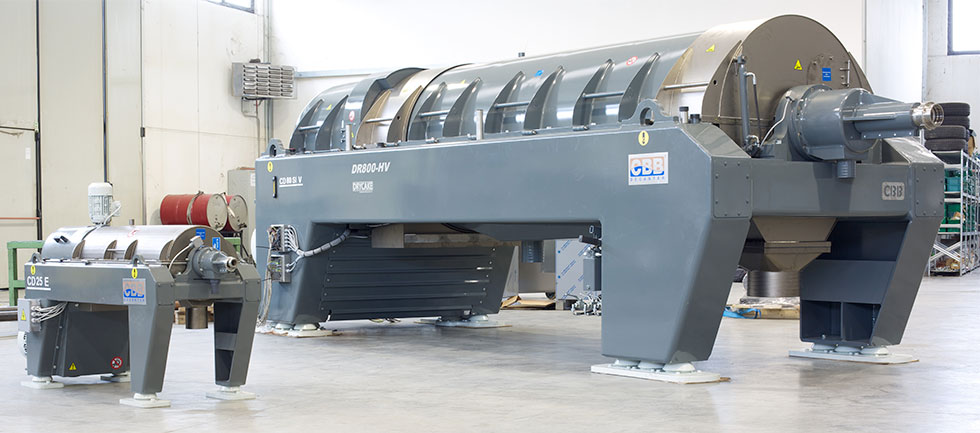From the first separators to modern decanter centrifuges: the evolution of particulate separation technology
- Introduction
- Start of separation
- Ancient Egypt – Wine and Oil Production
- The first mechanised separators
- The emergence of the centrifuge
- Evolution of the centrifuge into a decanter centrifuge
- Applications for decanter centrifuges
Have you ever wondered how liquid separation technology has evolved from ancient times to today? It may seem like a boring process at first glance, but it is in fact fundamental to many industries and to environmental protection.
From food production to waste management, the process of separating solids from liquids ensures that the final product is clean, safe and meets the highest quality standards. But the technology we take for granted today has a long and interesting history. In this article, I will tell you how the first separators and the first centrifuges originated, how they evolved into modern decanter centrifuges and how the CBB Decanter Centrifuge has become one of the most advanced solutions in modern industry.
Start of separation
Since ancient times, mankind has been searching for ways to separate solids from liquids more efficiently. The first methods were simple and relied on gravity – solid particles simply settled to the bottom of the container, while the clear liquid was poured over the top. Filtration, settling and manual pressure have been the main techniques used for thousands of years.
Ancient Egypt – Wine and Oil Production
The ancient Egyptians, who were among the first producers of wine and oil, used gravity and manual pressure to separate solid particles from the liquid. In wine making, they allowed the crushed grapes to settle so that the solids would settle naturally at the bottom of the vessel. In oil production, they used hand pressure to squeeze the oil from the olives. These methods, simple as they were, allowed ancient civilisations to effectively separate solids from liquids and were the first steps towards more sophisticated modern technologies such as the decanter centrifuge.

Ancient Egypt, winemaking
The first mechanised separators
During the Industrial Revolution, at the end of the 19th century, the first mechanised separators appeared. They allowed separation processes to be carried out more efficiently and in larger volumes. Milk separators, for example, were one of the first commercially successful applications of this technology. These devices were based on simple mechanical principles, but their impact on the industry was enormous.
One of the first inventors of mechanised centrifuges was Antonin Prandtl, who developed the first centrifuge-type machine for separating milk in 1864. However, the real technological breakthrough came in 1878, when Swedish engineer Gustaf de Laval introduced the Alfa Laval milk separator. This machine operated on the principle of centrifugation and enabled the cream to be separated from the milk quickly and efficiently, which was a revolutionary change in the dairy industry.
This invention was a milestone in improving the efficiency of the dairy industry, laid the foundation for further technological development, and showed how one person’s idea can become a powerful engine for change, while another’s improvements can make it a reality.

Alfa Laval milk separator
The emergence of the centrifuge
In the late 19th century, the first centrifuge was invented – a device that uses rotational force to separate solid particles from liquid. The development of the centrifuge was a revolutionary step in solids separation technology, as it allowed the process to be carried out much faster and more efficiently. Centrifuges were initially used in medical laboratories for the analysis of blood samples, but their benefits were soon recognised in other industries.
Evolution of the centrifuge into a decanter centrifuge
Like many technologies, centrifuges have undergone significant evolution over the past decades. Initial devices designed for simple particle separation have been refined to cope with increasingly complex and precise processes. The result of these developments is the decanter centrifuge, a device that has made it possible to separate complex materials and to carry out this process on a large scale.
A decanter centrifuge is a horizontal type of separator designed to separate two or three different phases in a liquid. It is more efficient because it uses centrifugal force, which is thousands of times greater than the force of gravity. Automation and new materials such as stainless steel have enabled these plants to operate continuously without human intervention, thus increasing their efficiency and reducing operating costs.
Applications for decanter centrifuges
As decanter centrifuges have continued to improve and evolve, their applications have expanded and they have become indispensable in many industries that require accurate and rapid separation of solids from liquids. They are now successfully used not only for the treatment of sludge in wastewater treatment plants, but also for the treatment of heavy sludge in mines, quarries or cement plants. In addition to their traditional use in the pharmaceutical and chemical industries, they are now used in the oil and food industries, plastics and paper processing.
Benefits of the CBB Decanter Centrifuge: why choose a CBB Decanter Centrifuge?
The CBB Decanter Centrifuge was born out of the need for a reliable, efficient and versatile system that could meet the needs of a wide range of industries and wastewater treatment plants. This plant has become the key creation of CBB Decanter S.r.l., which has ensured the company’s development in the past and will lead it to future success.
CBB Decanter A centrifuge is not just another industrial machine. It is distinguished by innovative technologies that enable it to achieve the highest efficiency and reliability. Here are some of the reasons why the CBB Decanter Centrifuge is the market leader:
- Innovative control algorithm: One of the main strengths of the CBB decanter centrifuge is its control system, which allows the optimisation of the entire separation process. The DPC (Decanter Process Controller) ensures that the unit operates with little or no operator intervention.
- High efficiency and versatility: the CBB decanter centrifuge can be used in a wide range of industries – from municipal wastewater treatment to complex chemical processes. It not only separates liquids and solids, but also helps to optimise processes, saving energy and resources.
- Reliability and durability: thanks to high-quality materials such as stainless steel and special alloy materials, the CBB decanter centrifuge is extremely durable and can operate for long periods without maintenance.
The history of particulate separation technology is long and complex, but each technological step has brought enormous benefits to the industry. From simple gravity methods to modern decanter centrifuges, each period has contributed to the advanced and efficient facilities we have today. The CBB Decanter Centrifuge is a perfect example of this technological evolution, showing how far we have come from ancient Egyptian wine production to modern industrial processes.

CBB Decanter Centrifuge
